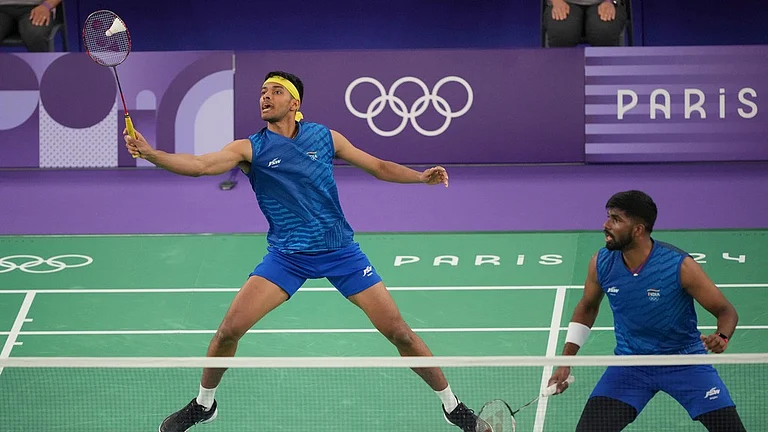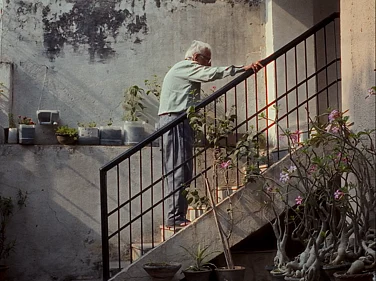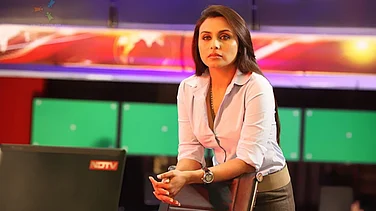Ukrainian artist Zhanna Kadyrova was forced to leave Kiev two weeks after the Russian forces invaded Ukraine in February 2022. She fled the capital city along with her mother, sister and pets and spent the initial days of occupation in the Transcarpathian region. It was in the riverbeds crisscrossing tiny villages nestled by the Carpathian mountain range that she noticed rounded stones. “To me, they looked like Palianytsia,” she says. Palianytsia is a type of traditional welcome bread common in Ukrainian households.
Those river stones have travelled from Ukraine to Kochi in Kerala in the form of an artwork titled ‘Palianytsia’ and are on display at the Kochi-Muziris Biennale.
The theme for this year’s Biennale—In Our Veins Flow Ink and Fire—is, in the words of show curator Shubigi Rao, a ‘bulwark against despair’. War leads to hunger. Through her artwork, Kadyrova helps us visualise the situation in war-torn Ukraine. The humble bread is a medium through which this story is told. “Ukrainians are known for their hospitality and this type of bread is used as a welcome snack. But this bread is made of stones because the Russian occupiers are not welcome,” says Kadyrova.
Bread is perhaps the most political food known to the history of humankind. In the Book of Exodus, bread became the ‘gift of god’, the manna from heaven that Moses procured to save masses of starving Israelites. In The Last Supper, bread became the divine ‘body of Christ’, his flesh and blood, consumed by Christians to cleanse them of sins. In 18th-century France, the shortage of bread became the focal point of a proletarian uprising against the church and the monarchy. Bread has once again become the symbol of identity and resistance—this time in Ukraine.
When the war broke out, Palianytsia became a password for the locals to distinguish friends from foes. “You see, Russians can’t pronounce Palianytsia correctly,” says Kadyrova.
It traverses the delicate line that separates ‘food as a necessity’ from ‘food as luxury’. With Palianytsia, Kadyrova juxtaposes the tangible tactility of hardness with the intangible effervescence of everyday emotions. The welcome bread made of stones becomes a metaphor for many things—Ukraine’s territorial and cultural resistance against the Russian-Soviet hegemony, the invariable hunger and death that ensues any war and the bare simplicity of violence. The softness of the bread is revealed to the tongue only after the eyes pierce through the hardness of the stone.
In 1945, Spanish surrealist Salvador Dali, who liberally used bread as a motif in his paintings created ‘Basket of Bread–Rather Death than Shame’. Depicting a heel of a loaf of bread in a basket at the edge of a table in a background of sheer darkness, the deceptively straightforward portrait had layers of political messaging. It symbolised a post-war world at the precipice of total decline, a world of atomic bombs threatening the very soul of civilisation, the “moral hunger” of Germans and a commentary on the fall of Adolf Hitler.
Palianytsia adopts a similar approach to the visual grammar of war metaphors. Like Kadyrova’s inedible bread, Ukrainians have adapted to the endlessness of war with the hardness of stone. And like Palianytsia, it is deceptive. “Putin underestimated the Ukrainian resistance. But we are tougher than we appear,” she laughs.
In the days that preceded and followed the invasion, many in Ukraine could not sleep for days. And yet, they continued to dream—of peace and survival, of victory, of nostalgia, of loved ones, of dapper dinner parties.
On the night before the invasion, Kadyrova dreamt she was on fire. The left side of her body had suddenly burst into flames and she was trying to roll on a patch of grass to douse them. Suddenly, the scene changed and she and her friends—who had been gathered at her home just a few hours ago for a dinner party—were hiding under a table. ‘Hiding from what?’ Kadyrova recalls thinking in her sleep. At 5 am, she woke up to the sound of rockets. Soon, she was exiled from home.
Recounting the challenge of creating art in war time, Kadyrova says: “It was a horrible time. There was complete chaos, especially in the Eastern and Southern Ukraine where Russia was attacking. To me, Palianytsia is a memoir of that horrible time set in stone. But it is also optimistic. There is hope in resistance.”
As per estimates by the United Nations, over 8,000 civilians have been killed since the war started and at least 6.5 million Ukrainians have been internally displaced. According to the Centre for Research and Analysis of Migration, 18.8 million Ukrainians had left the war-stricken nation. Ten million have now returned home.
Kadyrova is back in Kiev to support her friends and fellow Ukrainians as the nation completes one year of the war. After a year of fighting, communities living in the violence-hit parts of the country are struggling to rebuild their cities and towns. Not much of Kiev, the town where she grew up in, remains the same. Buildings have been bombed to obsolescence, schools and hospitals destroyed, and power plants ravaged, leaving thousands freezing, bringing back memories of the intense winter of World War II.
For the past year, Kadyrova, like many other Ukrainian artists, has cancelled all projects that are not related to the socio-political situation in Ukraine and is only focused on resistance. She has managed to raise nearly €200k in the past year for the Ukrainian armed forces and others involved in the front lines through global shows of Palianytsia and her other works.
(This appeared in the print edition as "‘STONE BREAD’ and Resistance")


























